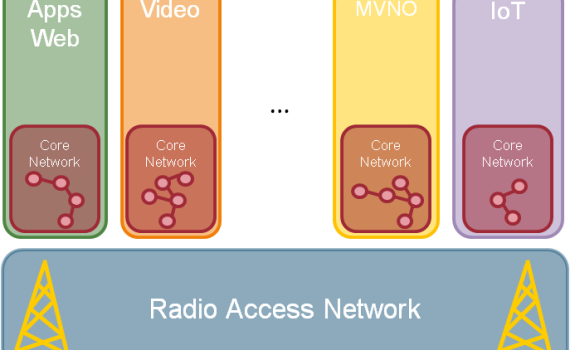
The verticalization of the core network in context
Category : Pulse
An interesting application use case enabled by NFV/SDN is the verticalization of the core network.
Current status and the effect of the verticalization are depicted in the figures below.
 The verticalization embeds the core network with the higher services layer. It may benefit operators providing differentiated services avoiding net-neutrality issues (see post here). On the other side mobile operators can be reduced to just the radio operators with all the services value (including voice) moving out of their hands to others (see post here).
The verticalization embeds the core network with the higher services layer. It may benefit operators providing differentiated services avoiding net-neutrality issues (see post here). On the other side mobile operators can be reduced to just the radio operators with all the services value (including voice) moving out of their hands to others (see post here).
The main advantage of the verticalization is that each core network will be adapted and optimized for the specific service. This is especially important for machine to machine communications and Internet of Things applications like eHealth or Industry4.0. These services have totally different communication requirements than voice, video entertainment or browsing which are the services for which we are optimizing current core networks.
 My understanding of verticalization of the core network encompasses but goes beyond what 3GPP calls “Dedicated Core Networks” and definitely is not related to the 3GPP concept of “Network Sharing”.
My understanding of verticalization of the core network encompasses but goes beyond what 3GPP calls “Dedicated Core Networks” and definitely is not related to the 3GPP concept of “Network Sharing”.
In “Dedicated Core Networks” the operator decides based on the subscriber identity which core network to assign and in “Network Sharing” there are several operators announced and the device only belongs to one. So the core network is assigned on attachment.
What would be really disruptive of this verticalization of the core network is if it could be decided dynamically for application, that way it would be possible to circumvent net-neutrality regulations and provide a really custom experience. For example when the user is using the real-time live video app then all that traffic goes through a different core network which is then video optimized and definitely not neutral like the core network with the Internet traffic.
Of course with “Dedicated Core Networks” and NFV it would be possible to end up with a core network for each user in the extreme personalization scenario which is also very interesting and around which there is some research ongoing.
An opposite scenario also winning momentum is that of the core network deployed at the edge, in the RAN layer, that doesn’t necessarily reduce the operator to the radio provider and may even trigger new business models for mobile operators like selling very low latency datacenter capacity at the edge for the critical services that require it.
In any case Management and Orchestration (MANO) of all those virtual and software defined core networks is going to be a challenge. If you want to know more about NFV MANO and SDN have a look at my report here.
A company creating those core networks adapted for vertical use cases as well as those for decentralized, autonomous, rural, remote, off-grid or highly specialized communications is Core Network Dynamics , from some ex-colleagues here in Berlin.
I will be talking about some of these topics at the LTE MENA 2015 conference next week in Dubai.
